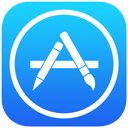On the heels of Apple’s announcement of an impending App Store cleanup, it has updated its App Review Guidelines to cover app subscriptions, stickers, and SiriKit apps. Among other guidelines, Section 3.1.2(a) states that:
While the following list is not exhaustive, examples of appropriate subscriptions include: new game levels; episodic content; multi-player support; apps that offer consistent, substantive updates; access to large collections of, or continually updated, media content; software as a service (“SAAS”); and cloud support.
The availability of subscriptions for apps that are ‘continually updated’ provides additional clarity to an issue that was hotly debated and discussed among developers since subscriptions were announced shortly before WWDC.
The App Review Guidelines also include an entire section on stickers.
Whether your app contains a sticker extension or you’re creating free-standing sticker packs, its content shouldn’t offend users, create a negative experience, or violate the law.
Section 4.4.3 includes a link for making infringement claims and states that if you cannot back up your rights to content contained in stickers with documentation, your sticker packs and extensions will be removed from the App Store. Repeat violators risk having their developer accounts revoked.
With respect to SiriKit, section 2.5.11 of the Guidelines provides:
Apps integrating SiriKit should only sign up for intents they can handle without the support of an additional app and that users would expect from the stated functionality. For example, if your app is a meal planning app, you should not incorporate an intent to start a workout, even if the app shares integration with a fitness app.
This guideline seems to be designed to avoid confusion that could be created by an app without clear SiriKit functionality accessing SiriKit.



